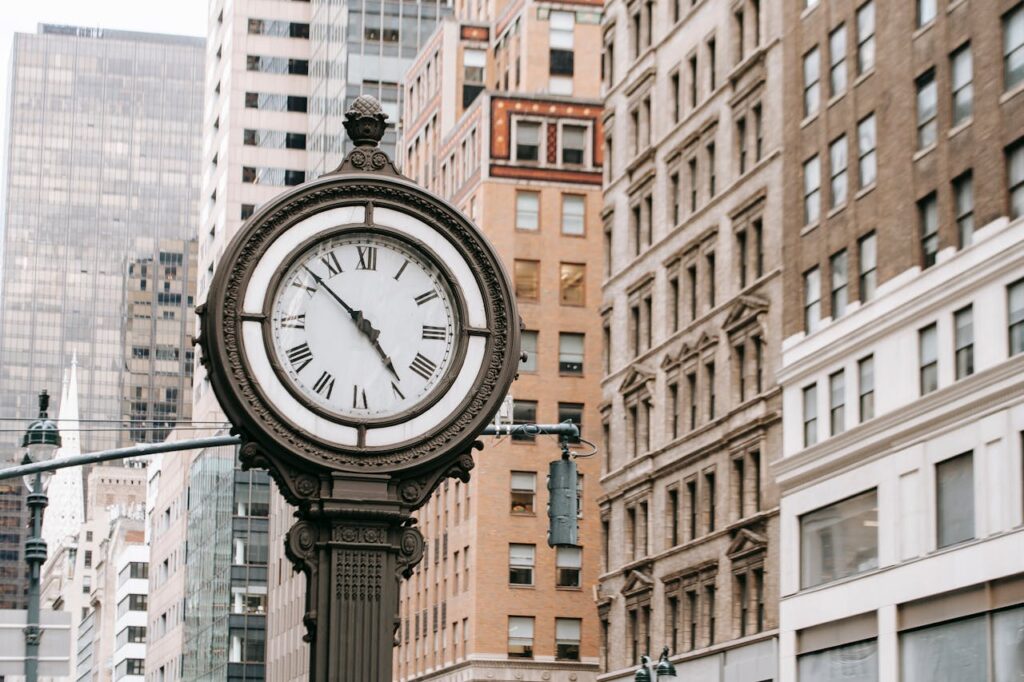
As the crisp autumn air settles in and the days grow shorter, it’s time to prepare for the end of Daylight Saving Time (DST). This year, DST ends on November 3rd, 2024, a day when we turn our clocks back one hour, granting us an extra hour of sleep. But what does this change mean, and how are different states approaching it in 2024?
Daylight Saving Time was initially implemented as a means to make better use of daylight during the longer days of spring and summer. However, the transition can be disruptive, impacting everything from our sleep patterns to daily routines. In recent years, there’s been growing debate about whether DST should be made permanent, with several states advocating for an end to the biannual clock change.
In this comprehensive guide, we’ll explore the history of DST, the impact on health and economy, the ongoing legislative efforts to end it, and tips on how to adjust seamlessly.
The History and Purpose of Daylight Saving Time
Origins and Historical Context
Daylight Saving Time has a rich history that dates back to the early 20th century. The concept was first proposed by George Hudson, a New Zealand entomologist, in 1895. It wasn’t until World War I that the practice was widely adopted as a way to conserve energy. The idea was that longer daylight hours would reduce the need for artificial lighting and save fuel for the war effort.
Modern Implementation
In the United States, DST was standardized in 1966 with the Uniform Time Act, which established a consistent start and end date across states. However, states were given the option to opt out, and today, Hawaii and most of Arizona do not observe DST. The practice is meant to make better use of daylight, providing longer evenings during the warmer months.
Current Debate and Legislation
In recent years, there has been a growing movement to make DST permanent. States like Florida, California, and Tennessee have passed legislation to keep DST year-round, but federal approval is required for such a change. This ongoing debate has raised questions about the effectiveness and relevance of DST in today’s society. For example, Tennessee has shown interest in making DST permanent, with residents expressing a desire to avoid the biannual disruption of changing clocks .
How Daylight Saving Time Affects Our Health
Circadian Rhythms and Sleep Patterns
The end of DST can significantly impact our circadian rhythms, the body’s internal clock that regulates sleep-wake cycles. When we “fall back,” gaining an extra hour of sleep, it can be a mixed blessing. While it might provide a brief respite, it also disrupts our natural sleep patterns, which can lead to difficulty adjusting.
Physical and Mental Health Impacts
Adjusting to the time change affects more than just sleep. Research indicates that the transition can lead to various health issues, including an increased risk of heart attack and stroke, particularly when clocks move forward in the spring. The fall transition is generally easier, but it can still result in disruptions to mood and energy levels.
Strategies for a Smooth Transition
To mitigate the effects on health, it’s crucial to adjust gradually. Start by going to bed 15 minutes earlier each night leading up to the end of DST. Exposure to natural light in the morning can also help reset your internal clock, making the transition smoother. Additionally, maintaining a regular sleep schedule can minimize the impact on your health.
The Economic and Environmental Benefits of Daylight Saving Time
Energy Conservation
One of the primary reasons for implementing DST was to conserve energy by extending daylight hours, thus reducing the need for artificial lighting. While studies have shown some energy savings, the impact is less significant in the modern world, where heating and cooling demand play a larger role in energy consumption.
Economic Implications
DST can have positive economic effects, particularly for retail businesses and the tourism industry. Longer daylight hours encourage people to spend more time shopping and participating in outdoor activities, boosting the economy. However, this benefit is countered by the potential negative effects on sectors that depend on morning activity.
Legislative Movements and Environmental Considerations
With the push to make DST permanent, several states argue that the benefits of DST extend beyond economics to include public safety and environmental considerations. For example, longer daylight hours in the evening can reduce the number of traffic accidents and decrease crime rates. The reduction in energy consumption, although minor, also contributes to lowering greenhouse gas emissions.
Adjusting Your Daily Routine When Daylight Saving Time Ends
Sleep and Waking Tips
To make the transition smoother, gradually adjust your sleep schedule a few days before the change. Going to bed and waking up 10-15 minutes earlier each day can help your body adapt. Once DST ends, aim to maintain a consistent sleep schedule to minimize disruptions.
Diet and Exercise
Your eating habits can influence how well you adjust to the time change. Eating a balanced diet and avoiding heavy meals close to bedtime can improve sleep quality. Incorporating regular exercise, particularly in the morning, can boost energy levels and help regulate your internal clock.
Managing Technology Use
The use of electronic devices before bed can interfere with sleep due to the blue light emitted by screens. Limit screen time in the evening and consider using blue light filters on devices to reduce the impact on your sleep cycle. Creating a calming bedtime routine, such as reading a book or practicing relaxation techniques, can also aid in a smoother adjustment.
Common Myths and Misconceptions About Daylight Saving Time
Myth 1: DST Was Created for Farmers
A common misconception is that DST was implemented to benefit farmers by providing more daylight for work. In reality, farmers have historically opposed DST because it disrupts their schedules, particularly in dairy farming where livestock routines are affected.

Myth 2: DST Saves a Lot of Energy
While energy savings were a key reason for DST’s implementation, modern studies show that the actual savings are minimal. Advances in energy-efficient lighting and changes in energy consumption patterns have reduced the overall impact. The debate on whether DST truly conserves energy continues, with some studies suggesting that any savings are offset by increased usage of heating and air conditioning.
Myth 3: DST Is Universally Practiced
Not all countries observe DST, and even within countries that do, not all regions participate. For example, in the United States, Hawaii and most of Arizona do not observe DST. Globally, regions closer to the equator see little benefit from DST due to relatively consistent daylight hours throughout the year. In Europe, there’s ongoing discussion about ending DST entirely, further emphasizing the diversity in global approaches to this practice.
Preparing for the End of Daylight Saving Time
Household Tasks to Remember
When DST ends, it’s a good opportunity to take care of some household maintenance. Remember to change the batteries in smoke detectors and carbon monoxide alarms. It’s also a good time to check emergency kits and update them if necessary.
Setting Clocks and Devices
Most modern devices like smartphones and computers update the time automatically. However, remember to manually adjust clocks on appliances, wall clocks, and car dashboards. This ensures you stay on schedule and avoid any confusion that might arise from missed appointments or activities.
Planning Your Day
With shorter daylight hours, plan your day to make the most of natural light. Schedule outdoor activities or errands earlier in the day to maximize exposure to sunlight, which can help maintain your mood and energy levels during the darker months. Additionally, using the extra hour of sleep wisely by waking up at a consistent time can help maintain your routine and productivity.
Conclusion
The end of Daylight Saving Time in 2024 marks a transition that can affect various aspects of our lives, from our sleep patterns to daily routines. With growing discussions about making DST permanent, it’s clear that this practice continues to evolve in response to modern lifestyles and preferences.
Being informed about the history, impact on health and economy, and ongoing legislative efforts can help you navigate this seasonal change more effectively. By taking proactive steps, such as adjusting sleep schedules and planning activities to make the most of natural light, you can ease into this transition and make it a positive experience.

